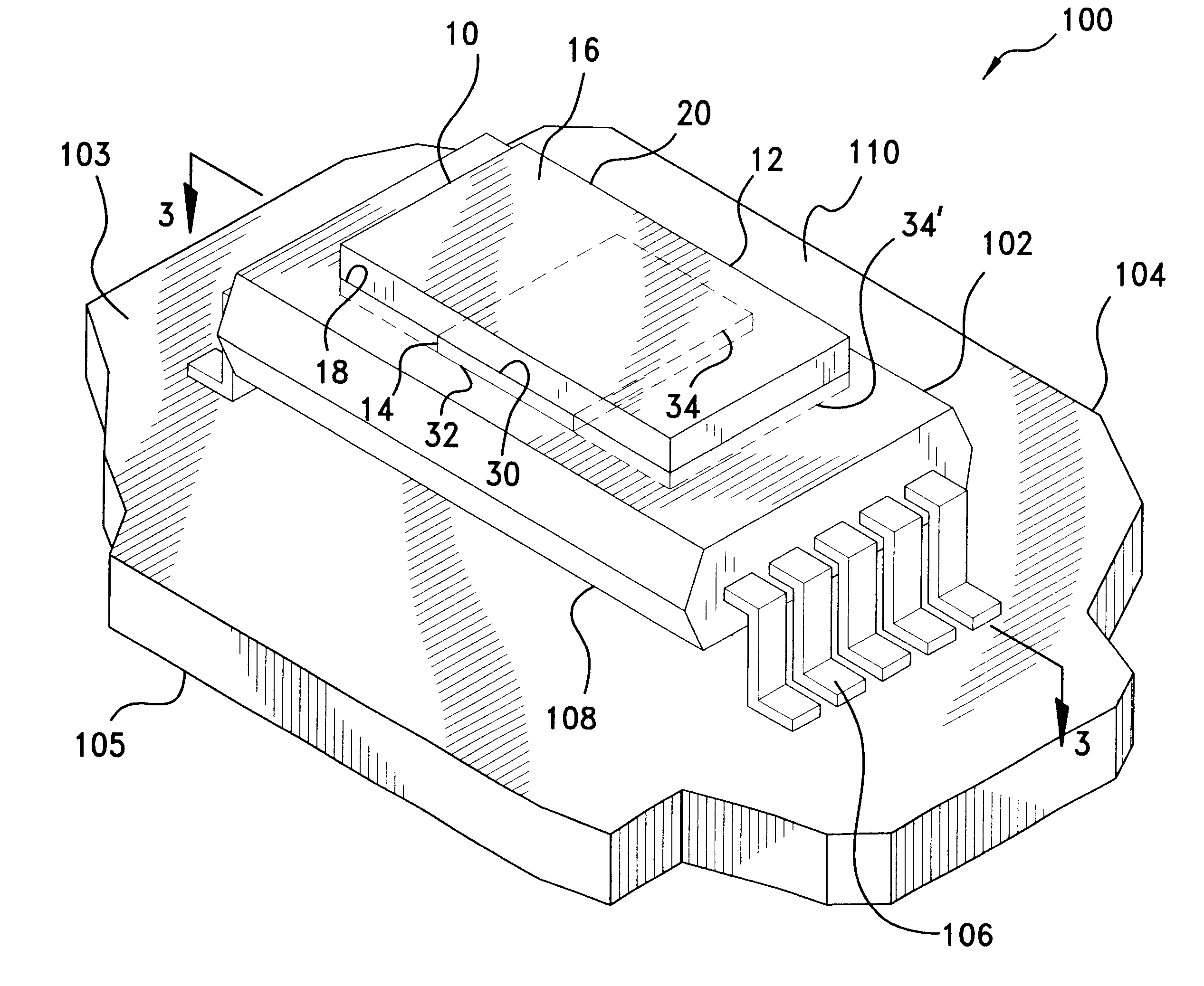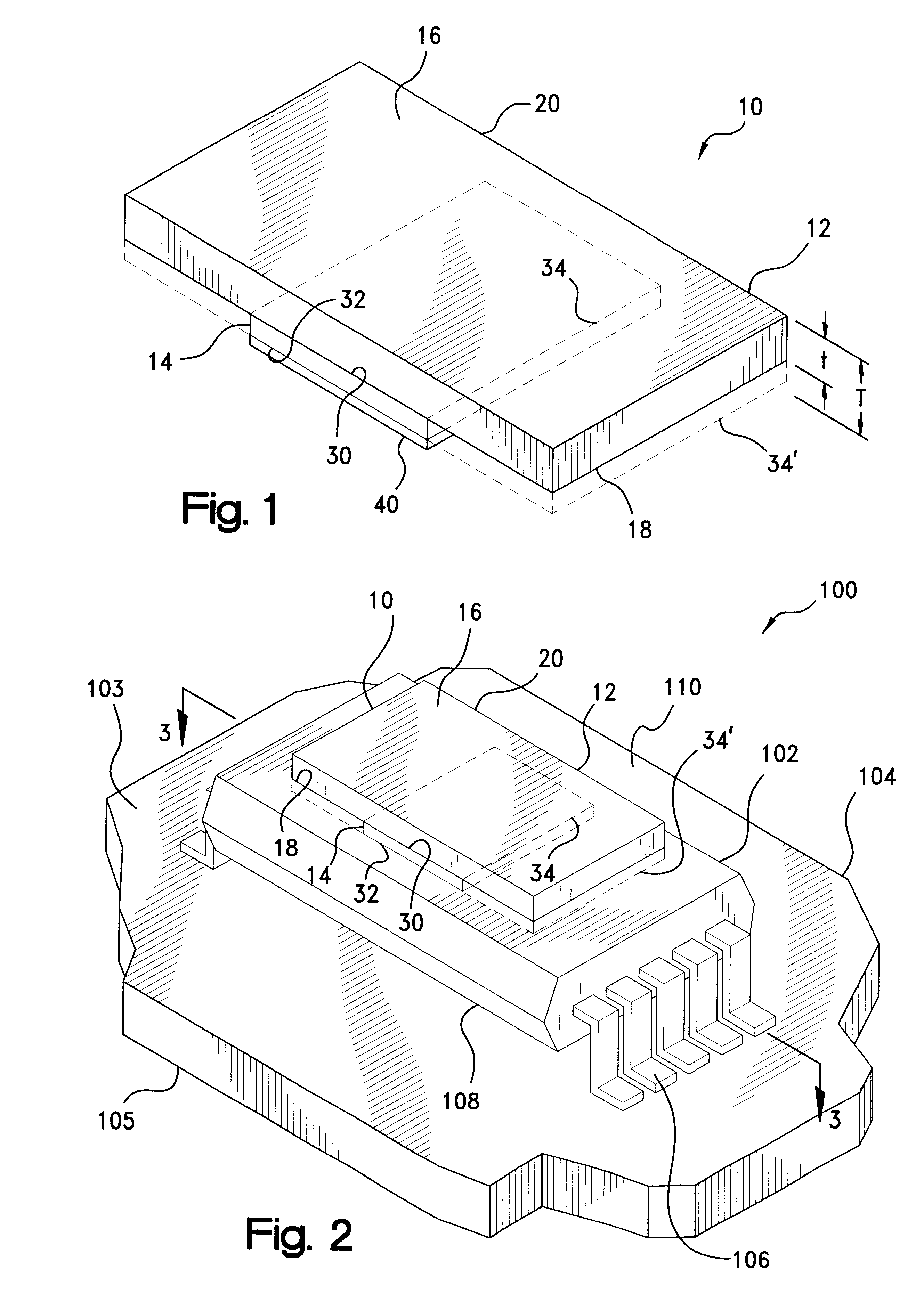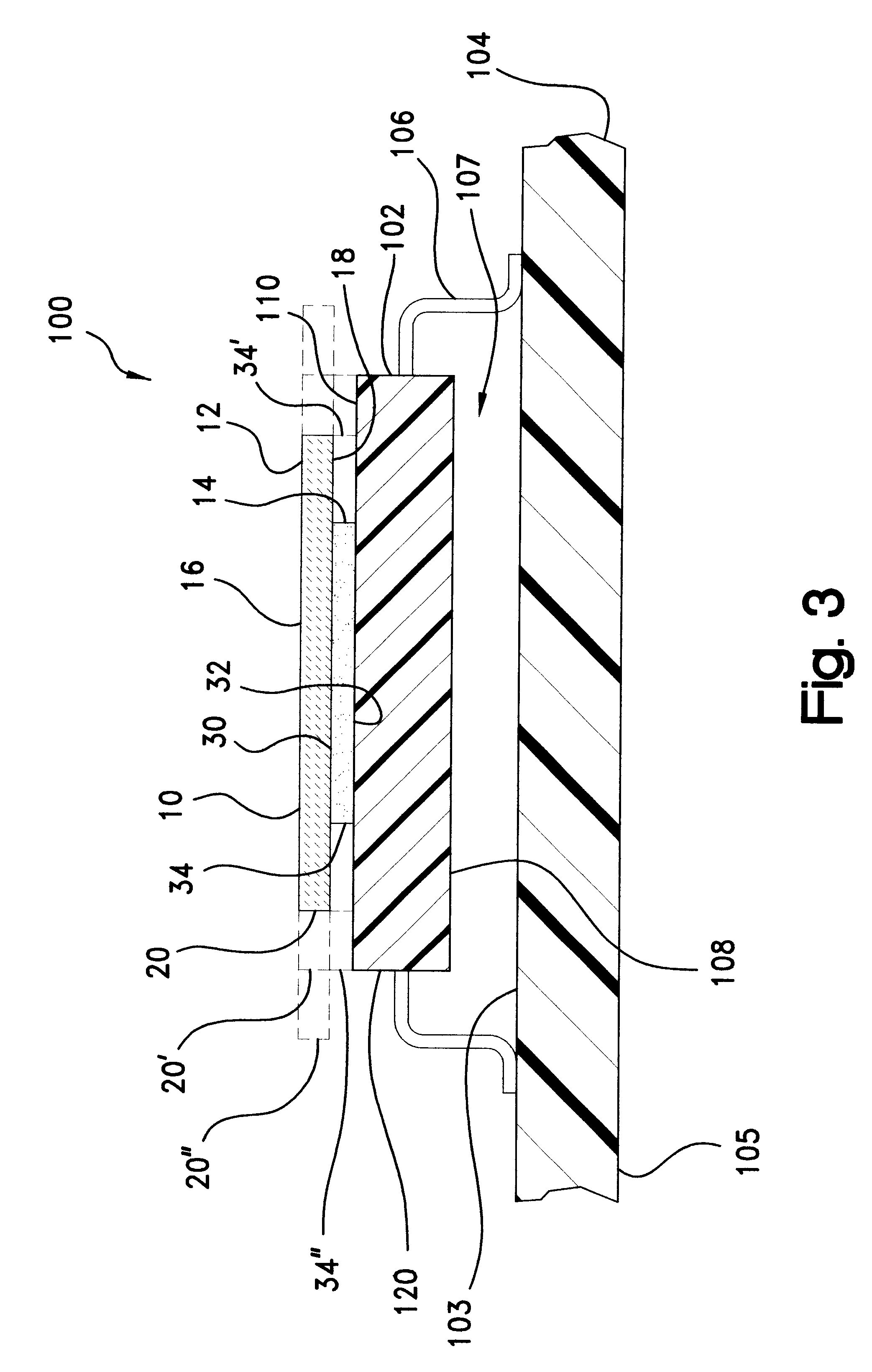Non-electrically conductive thermal dissipator for electronic components
a technology of non-electrical conductive and thermal dissipation device, which is applied in the direction of cooling/ventilation/heating modification, semiconductor/solid-state device details, televisions, etc., can solve the problems of increasing complexity of circuit designs of modern electronic devices such as televisions, radios, and communications equipment, and the size of devices has continued to shrink
- Summary
- Abstract
- Description
- Claims
- Application Information
AI Technical Summary
Benefits of technology
Problems solved by technology
Method used
Image
Examples
Embodiment Construction
Representative thermal dissipators according to the present invention were constructed for characterization. Samples were prepared by laser cutting a 60 mil sheet of alumina (96% Alumina, Coors Ceramic Co., Golden, Colo.) into a 1.8-inch by 1.8-inch square, and by laser cutting a 50 mil sheet of aluminum nitride (Accumet Engineering Corp., Hudson, Mass.) into a 1.25-inch by 1.25-inch square. Onto one side of each of the ceramic squares was applied a 3 mil thick layer of a silicone pressure sensitive adhesive (Thermattach.TM. T410, Parker Chomercis Division, Hudson, N.H.).
Each of the samples so prepared were surface mounted under an application pressure of less than 3 psi to an AMD Am386SLX-25, 100 lead PQFP microprocessor die coupled to a 2 watt external power supply. The Vcc and GND leads of the PQFP were soldered to an Analysis Tech PGA100T FR-4 test board in accordance with EIA and JEDEC recommendations.
The test apparatus was calibrated in a temperature controlled, dielectric flu...
PUM
 Login to View More
Login to View More Abstract
Description
Claims
Application Information
 Login to View More
Login to View More - R&D
- Intellectual Property
- Life Sciences
- Materials
- Tech Scout
- Unparalleled Data Quality
- Higher Quality Content
- 60% Fewer Hallucinations
Browse by: Latest US Patents, China's latest patents, Technical Efficacy Thesaurus, Application Domain, Technology Topic, Popular Technical Reports.
© 2025 PatSnap. All rights reserved.Legal|Privacy policy|Modern Slavery Act Transparency Statement|Sitemap|About US| Contact US: help@patsnap.com



